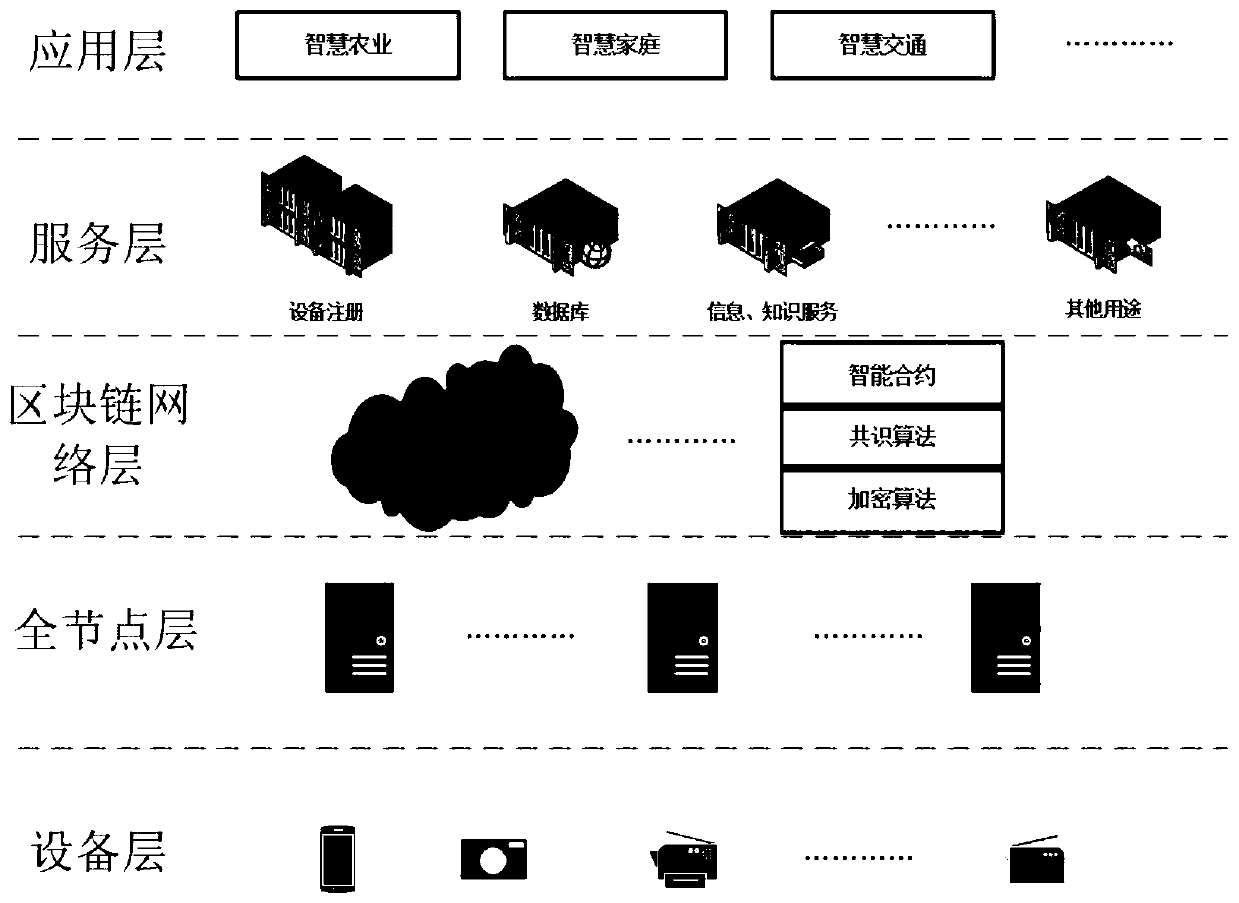Internet of Things service architecture based on lightweight block chain nodes
A technology of blockchain and Internet of Things, applied in payment architecture, instruments, payment systems, etc., can solve the problems of increasing the size of the blockchain, unbearable storage space, and increasing equipment bandwidth overhead, so as to improve security, improve smart effect
- Summary
- Abstract
- Description
- Claims
- Application Information
AI Technical Summary
Problems solved by technology
Method used
Image
Examples
Embodiment Construction
[0046] Attached below Figure 1-5 The present invention is further explained, including the step-by-step explanation of device registration of lightweight nodes, user registration, data upload of lightweight nodes, and data usage by users under this framework.
[0047] first according to figure 2 Describes the device registration procedure.
[0048] Step 1: After the manufacturer completes the production of a device and accesses the blockchain system as a lightweight blockchain node, the device needs to send a request to the registration server, and the request parameters include device information (such as production time, device model, device detail parameters etc.), should also include a private key information belonging to the device. The private key is used as a password for subsequent use of device services, which can be a string of character strings. That is, the lightweight node device needs to send a request with device information and private key string to the reg...
PUM
 Login to View More
Login to View More Abstract
Description
Claims
Application Information
 Login to View More
Login to View More - R&D
- Intellectual Property
- Life Sciences
- Materials
- Tech Scout
- Unparalleled Data Quality
- Higher Quality Content
- 60% Fewer Hallucinations
Browse by: Latest US Patents, China's latest patents, Technical Efficacy Thesaurus, Application Domain, Technology Topic, Popular Technical Reports.
© 2025 PatSnap. All rights reserved.Legal|Privacy policy|Modern Slavery Act Transparency Statement|Sitemap|About US| Contact US: help@patsnap.com



